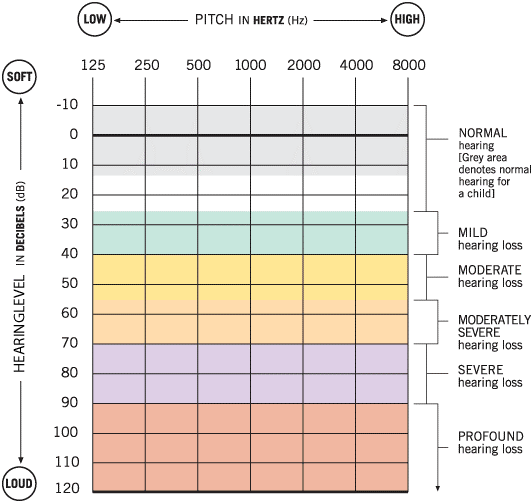A structural defect that can occur in the outer, middle or inner ear results in a hearing loss. For example, the outer ear might have an infection (external otitis) which causes swelling of the outer ear, the middle ear bones might experience a build up of calcium (otosclerosis), or the hair cells of the inner ear might become damaged from excessive noise. When damage to the outer or middle ear occurs it is referred to as a conductive hearing loss. Essentially, sounds are being prevented from being “conducted” through to the cochlea. When damage to the structures in the cochlea occurs, a sensorineural hearing loss results. With this type of hearing loss the primary structures that become damaged are the hair cells. Damaged hair cells will not transmit signals to the brain where they are interpreted.
If you suspect that you have a hearing loss you should visit an Ear Nose and Throat (ENT) physician, otherwise known as an otolaryngologist, and/or an audiologist. These professionals will be able to determine the type of hearing loss that you have and determine your degree of hearing loss. The ENT will address any medical reasons for the hearing loss (e.g., an ear infection or otosclerosis) and the audiologist will give you a hearing evaluation. As part of the hearing evaluation you will be asked to listen to different tones in each ear and report the softest sounds you hear. These softest sounds are called your behavioral thresholds. You may also listen to words and sentences and repeat what you hear. This speech testing is done to determine how your hearing loss affects your communication. Once the hearing evaluation is completed, the audiologist will review the results with you. The following audiogram is used to describe the degree and type of hearing loss you may have.
For adults, behavioral thresholds ranging from -10 dB HL to 25 dB HL are considered to be normal hearing; behavioral thresholds ranging from 26 dB HL to 40 dB HL result in a mild hearing loss; a moderate hearing loss occurs when thresholds are between 41 dB HL and 55 dB HL; a moderately severe hearing loss occurs when thresholds are between 56 dB HL and 70 dB HL; a severe hearing loss occurs when thresholds are between 71 dB HL and 90 dB HL, and finally, a profound hearing loss occurs when thresholds are at or above 91 dB HL. Typically, thresholds for higher pitched tones are worse than behavioral thresholds for lower-pitched sounds, resulting in a sloping hearing loss configuration.
